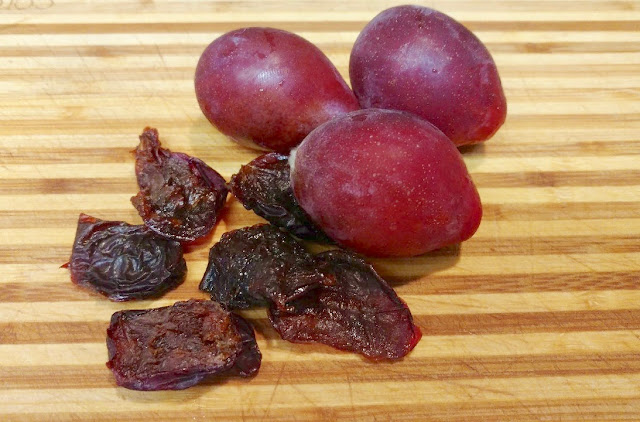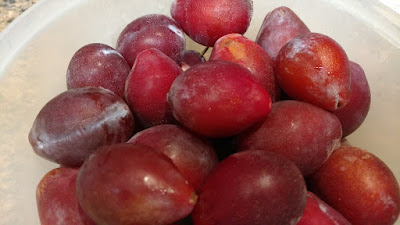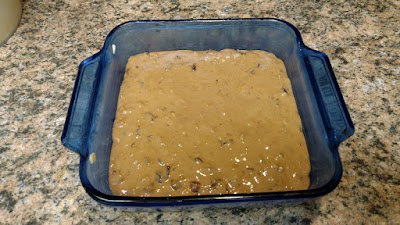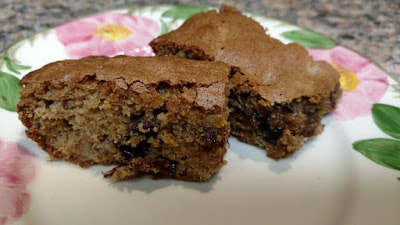
Recipe: Bake a batch of California prune bars

|
Call them dried plums or prunes; either way, they’re delicious – especially when made with fresh French or Italian plums.
These elongated “sugar plums” flourish in the greater Sacramento area. In the last weeks of summer and early fall, they’re readily available in farmers markets – or, if you're lucky, in your own backyard.
 |
| French and Italian plums grow well in the Sacramento region. |
Due to their high sugar content, these sweet ovals make good preserves, wine and brandy as well as fantastic prunes or dried plums. Freestone, these varieties let their pits pop out with little fuss.
Dried at home, these plums are soft and pliable. In a dehydrator, French or Italian plum halves takes about 24 hours to dry to perfection. Store the dried plums in the freezer; they’ll keep for at least a year.
What to do with those dried plums? Any recipe that calls for prunes, of course.
For September snacking, try this recipe for California prune bars, a variation of old-fashioned date bars. This recipe is adapted from a 1970 classic, “The California Cookbook” by former Los Angeles Times food editor Jeanne Voltz.
California prune bars
Makes 18 bars
Ingredients:

|

|
Comments
0 comments have been posted.Sacramento Digs Gardening to your inbox.
Food in My Back Yard Series
May 6: Maintain soil moisture with mulch for garden success
April 29: What's (already) wrong with my tomato plants?
April 22: Should you stock up on fertilizer? (Yes!)
April 15: Grow culinary herbs in containers
April 8: When to plant summer vegetables
April 1: Don't be fooled by these garden myths
March 25: Fertilizer tips: How to 'feed' your vegetables for healthy growth
March 18: Time to give vegetable seedlings some more space
March 11: Ways to win the fight against weeds
March 4: Potatoes from the garden
Feb. 25: Plant a fruit tree now -- for later
Feb. 18: How to squeeze more food into less space
Feb. 11: When to plant? Consider staggering your transplants
Feb. 4: Starting in seed starting
Sites We Like
Garden Checklist for week of May 11
Make the most of the lower temperatures early in the week. We’ll be back in the 80s by Thursday.
* Plant, plant, plant! It’s prime planting season in the Sacramento area. Time to set out those tomato transplants along with peppers and eggplants. Pinch off any flowers on new transplants to make them concentrate on establishing roots instead of setting premature fruit.
* Direct-seed melons, cucumbers, summer squash, corn, radishes, pumpkins and annual herbs such as basil.
* Harvest cabbage, lettuce, peas and green onions.
* In the flower garden, direct-seed sunflowers, cosmos, salvia, zinnias, marigolds, celosia and asters. (You also can transplant seedlings for many of the same flowers.)
* Plant dahlia tubers.
* Transplant petunias, marigolds and perennial flowers such as astilbe, columbine, coneflowers, coreopsis, dahlias, rudbeckia and verbena.
* Keep an eye out for slugs, snails, earwigs and aphids that want to dine on tender new growth.
* Feed summer bloomers with a balanced fertilizer.
* For continued bloom, cut off spent flowers on roses as well as other flowering plants.
* Add mulch to the garden to maintain moisture. Mulch also cuts down on weeds. But don’t let it mound around the stems or trunks of trees or shrubs. Leave about a 6-inch-to-1-foot circle to avoid crown rot or other problems.
* Remember to weed! Pull those nasties before they set seed.
* Water early in the day and keep seedlings evenly moist.